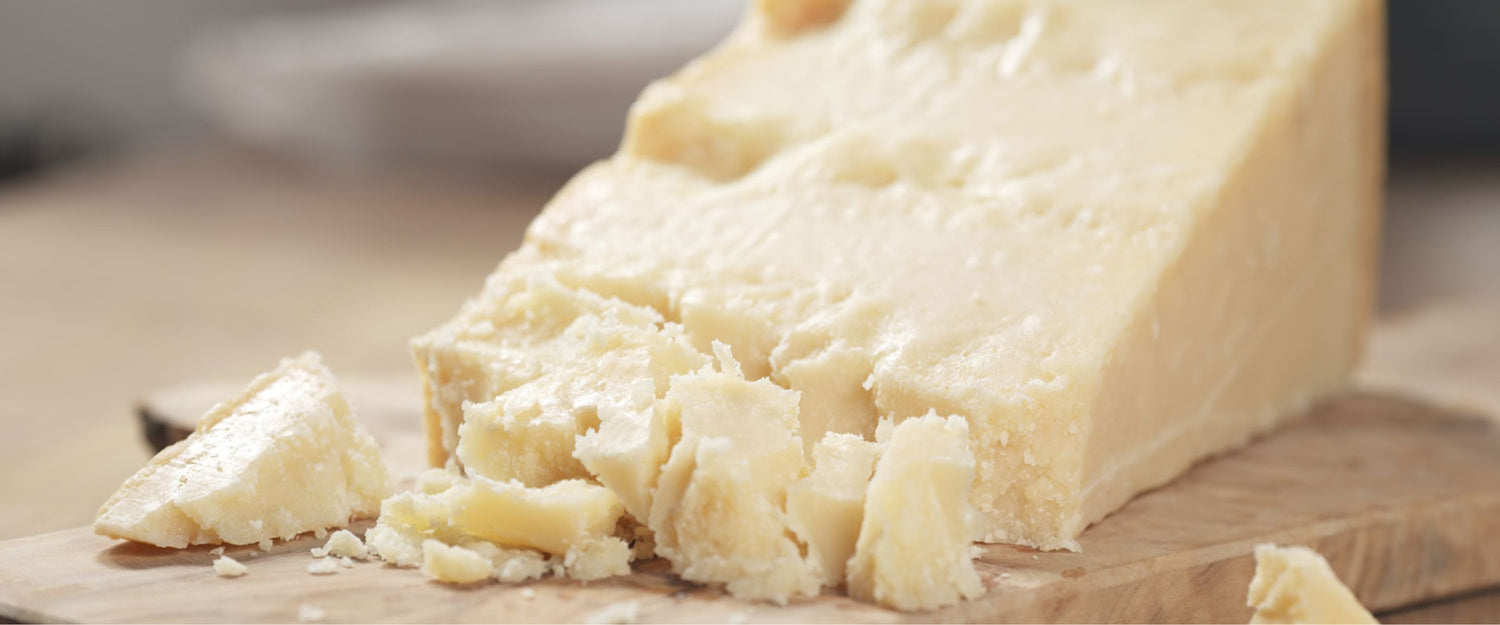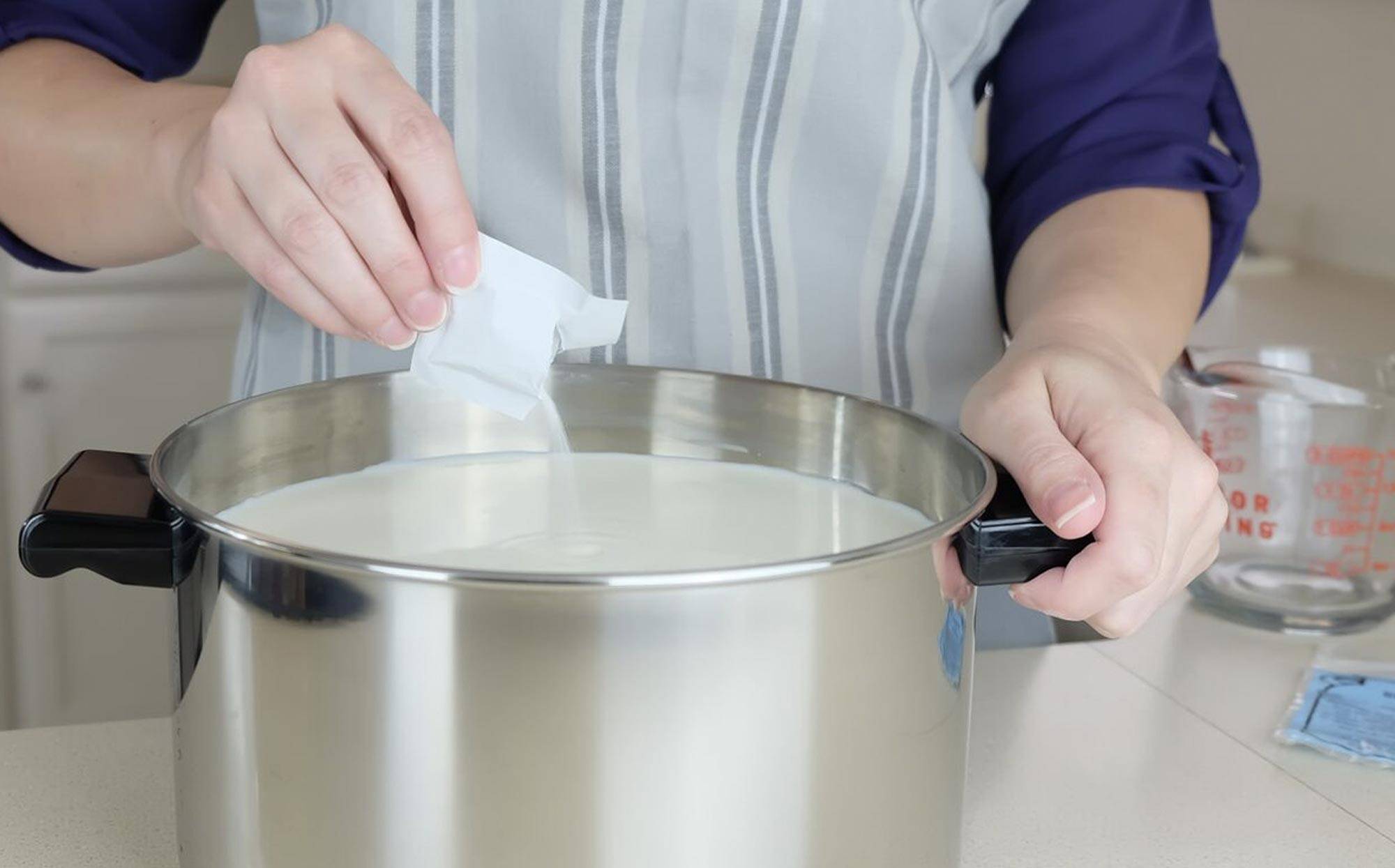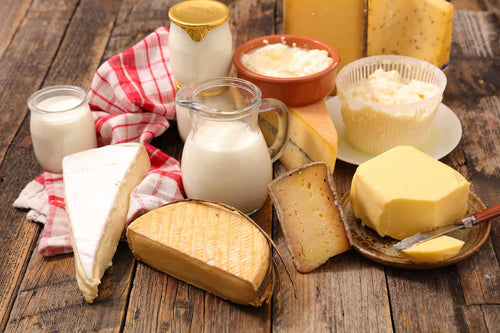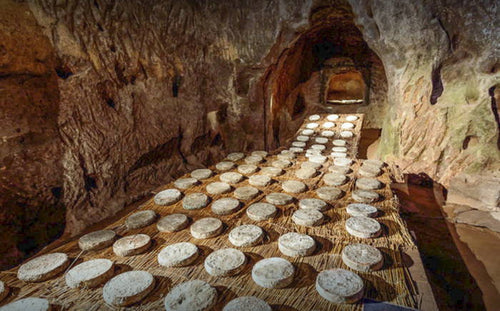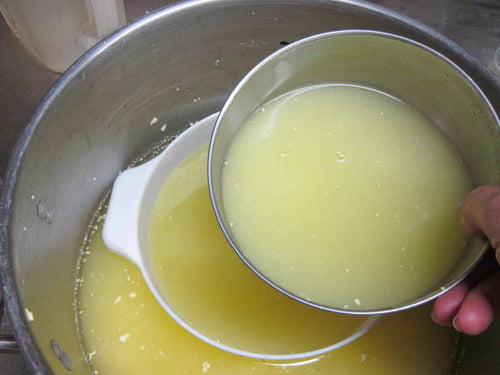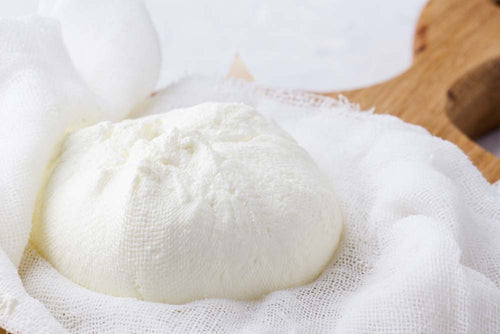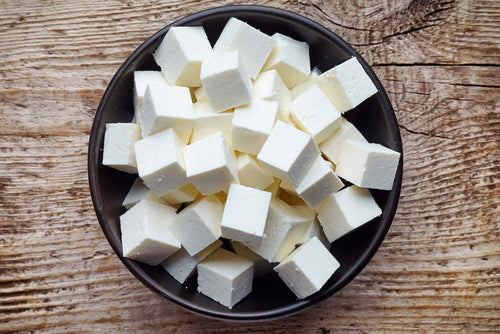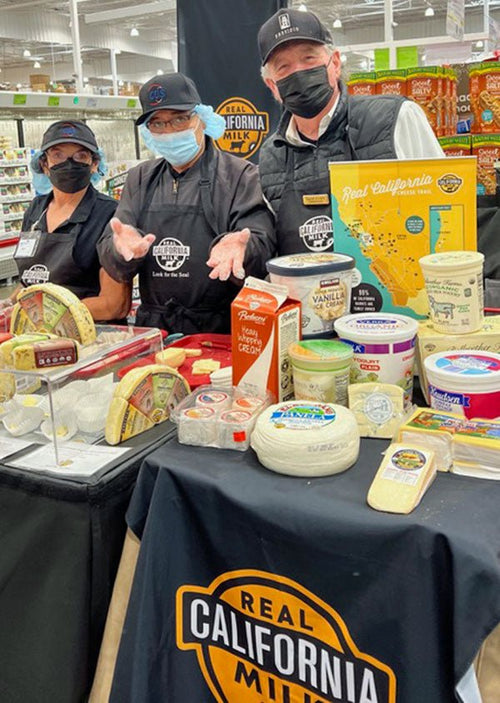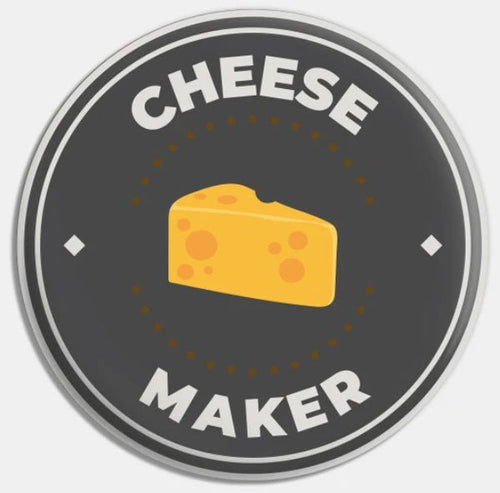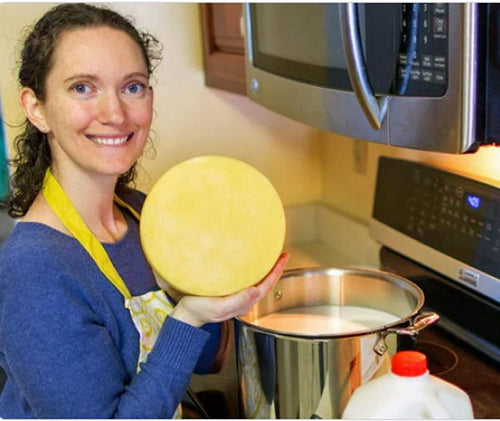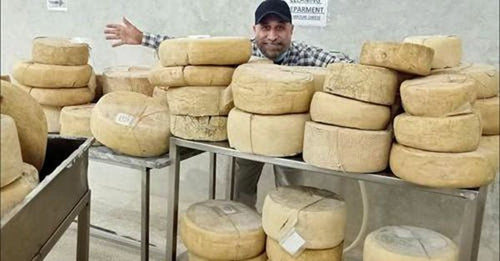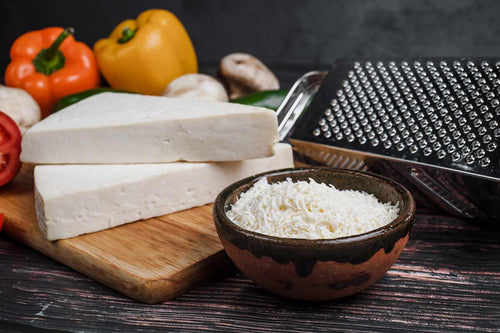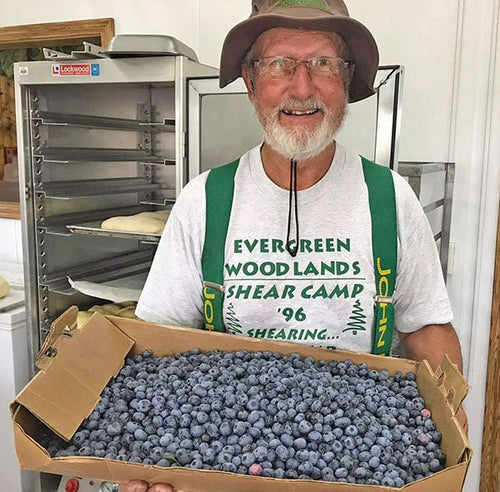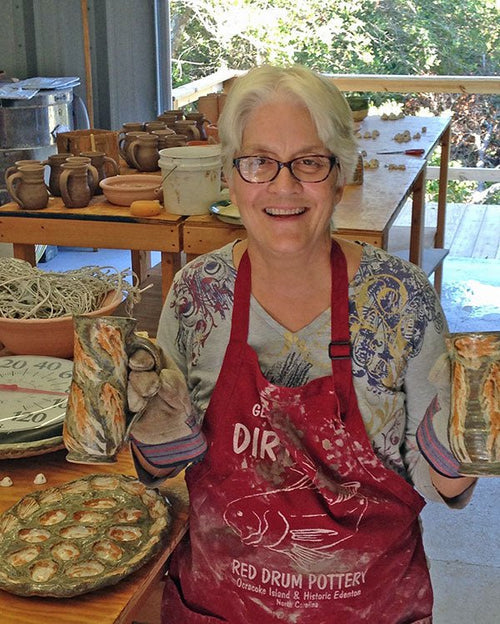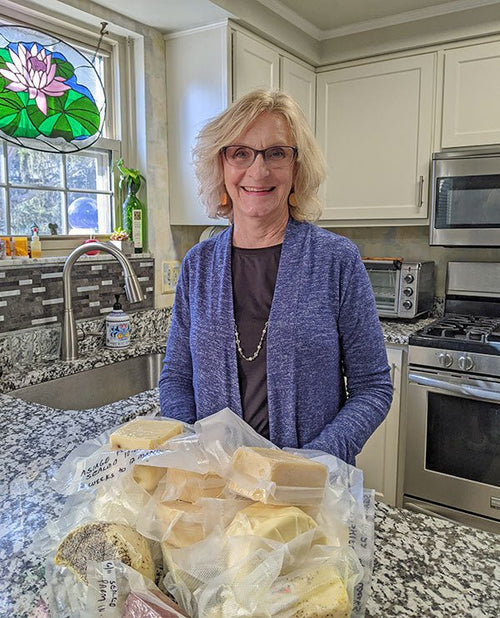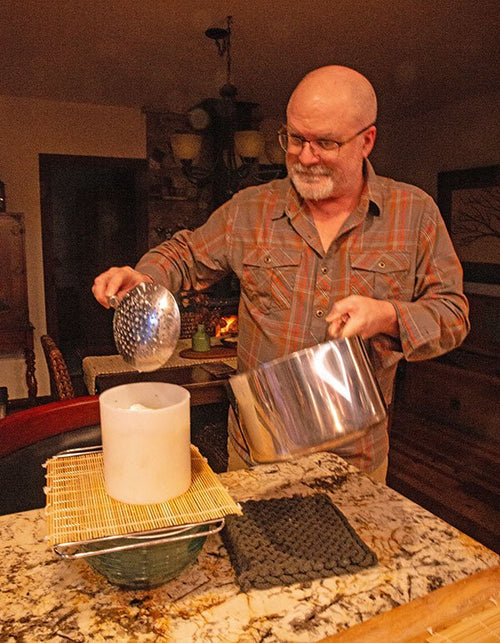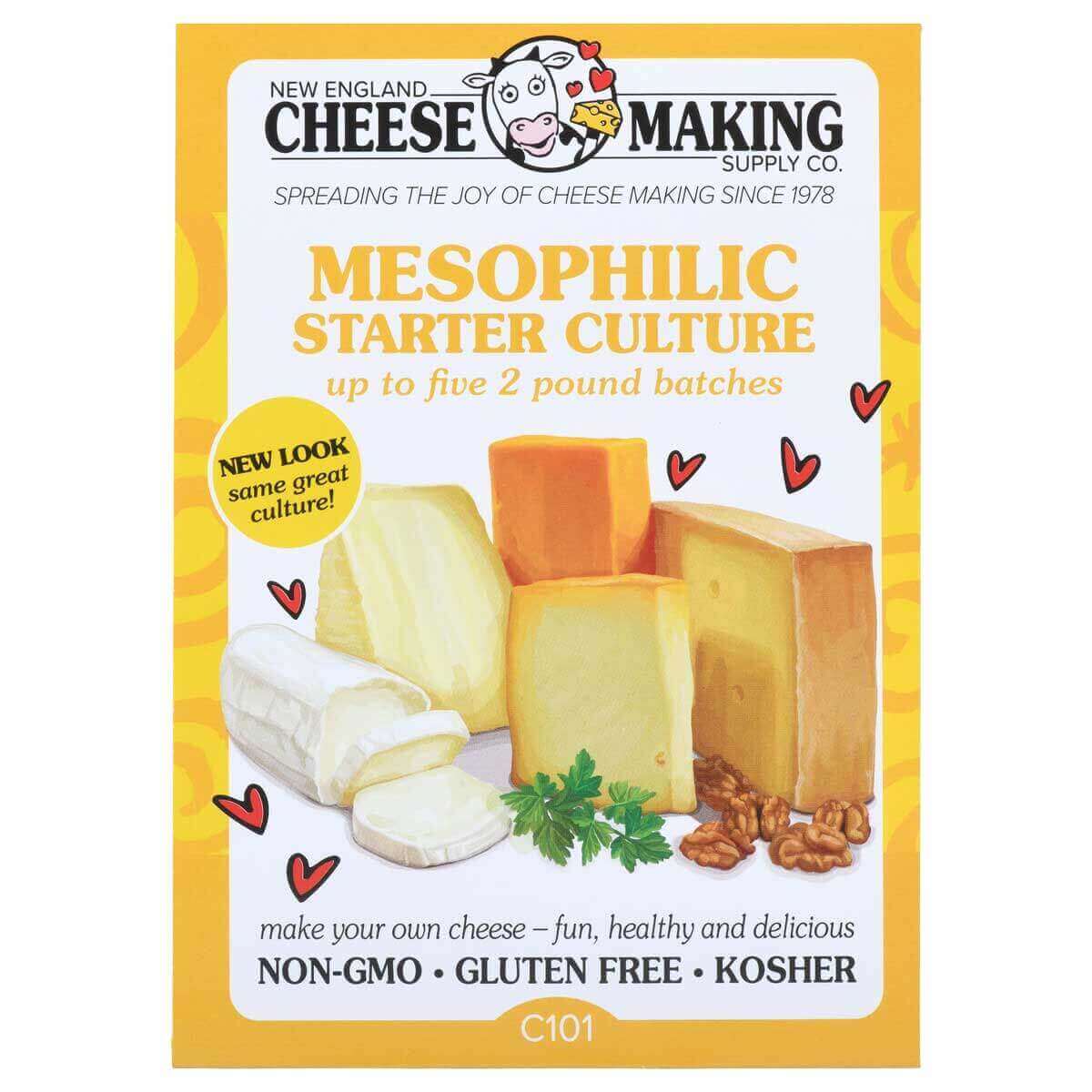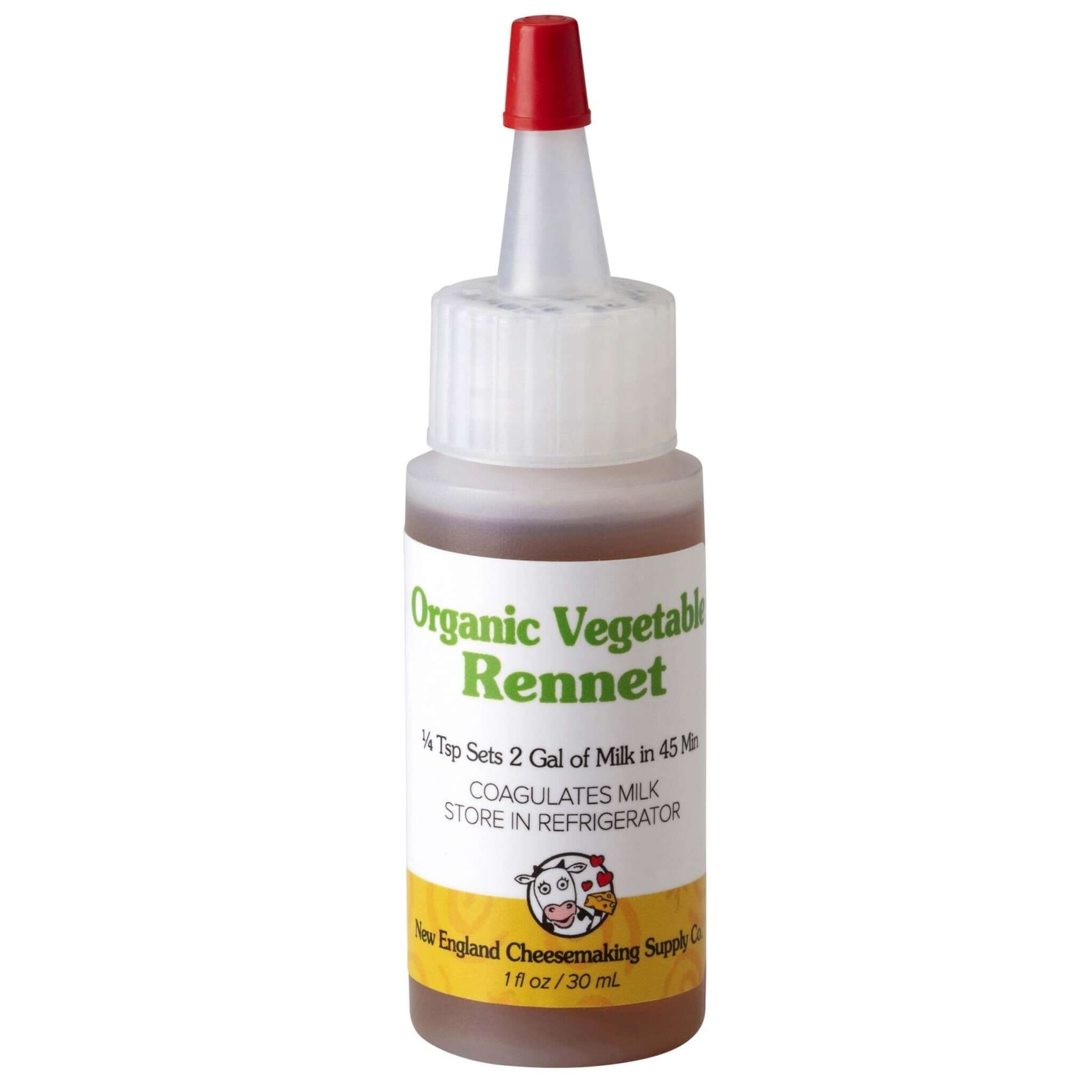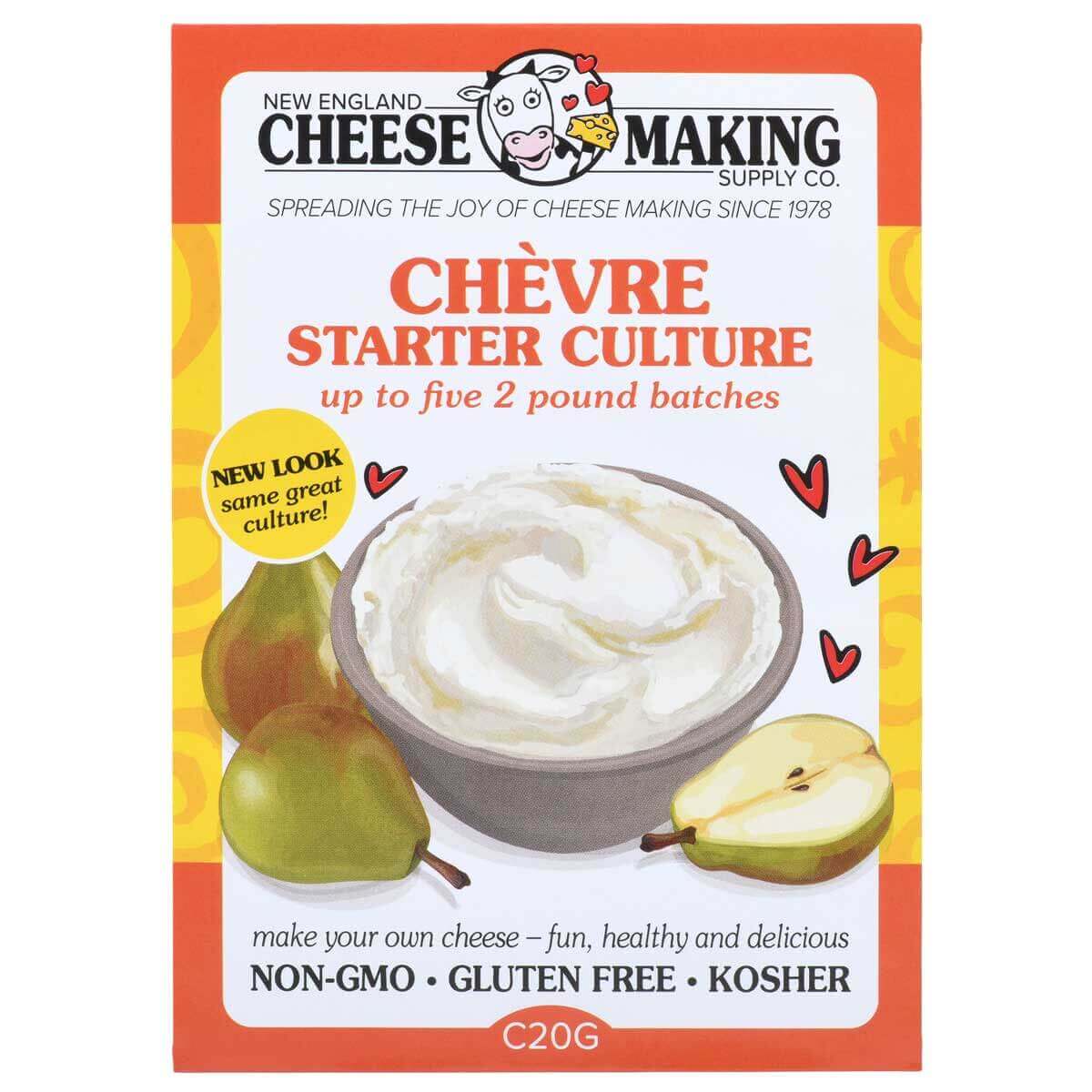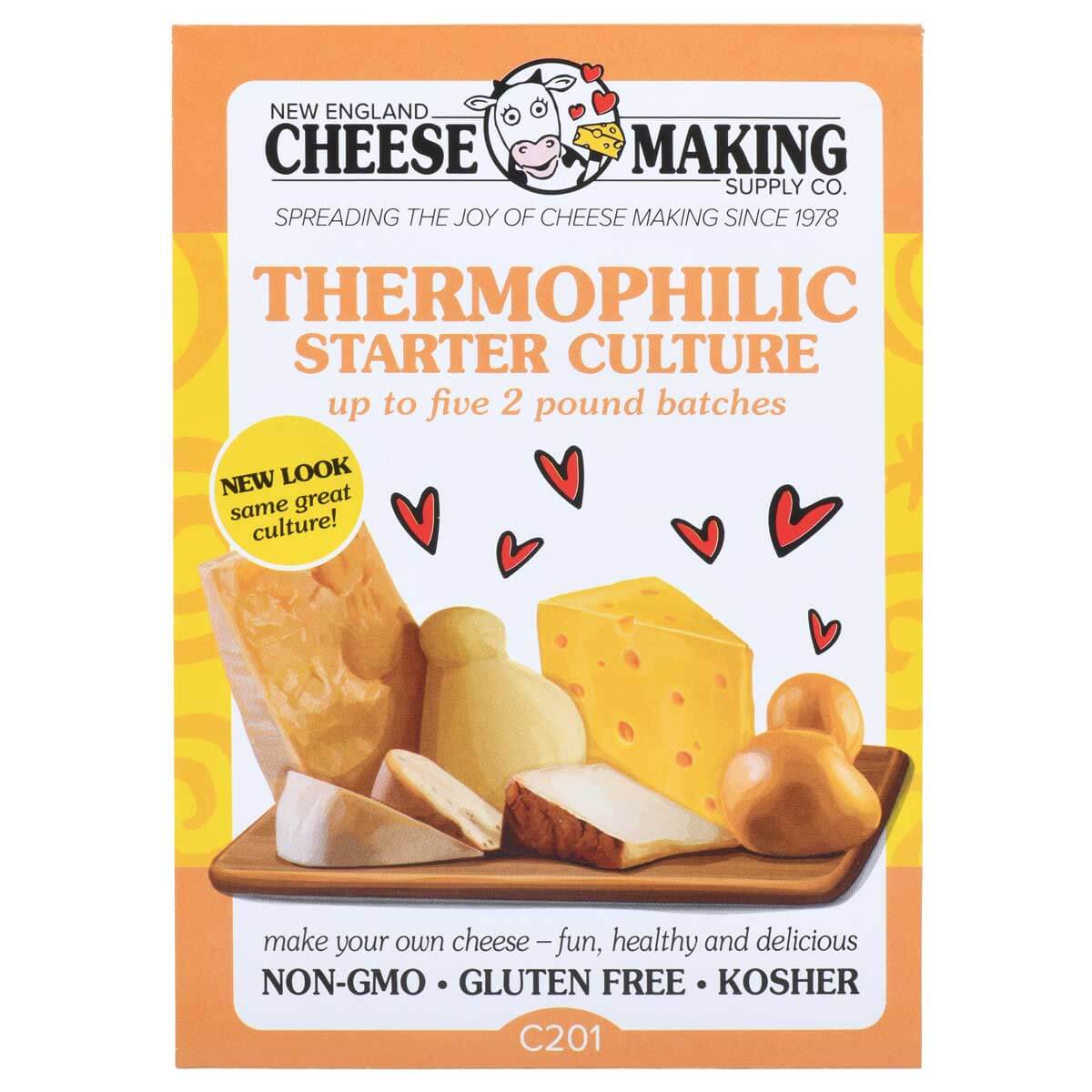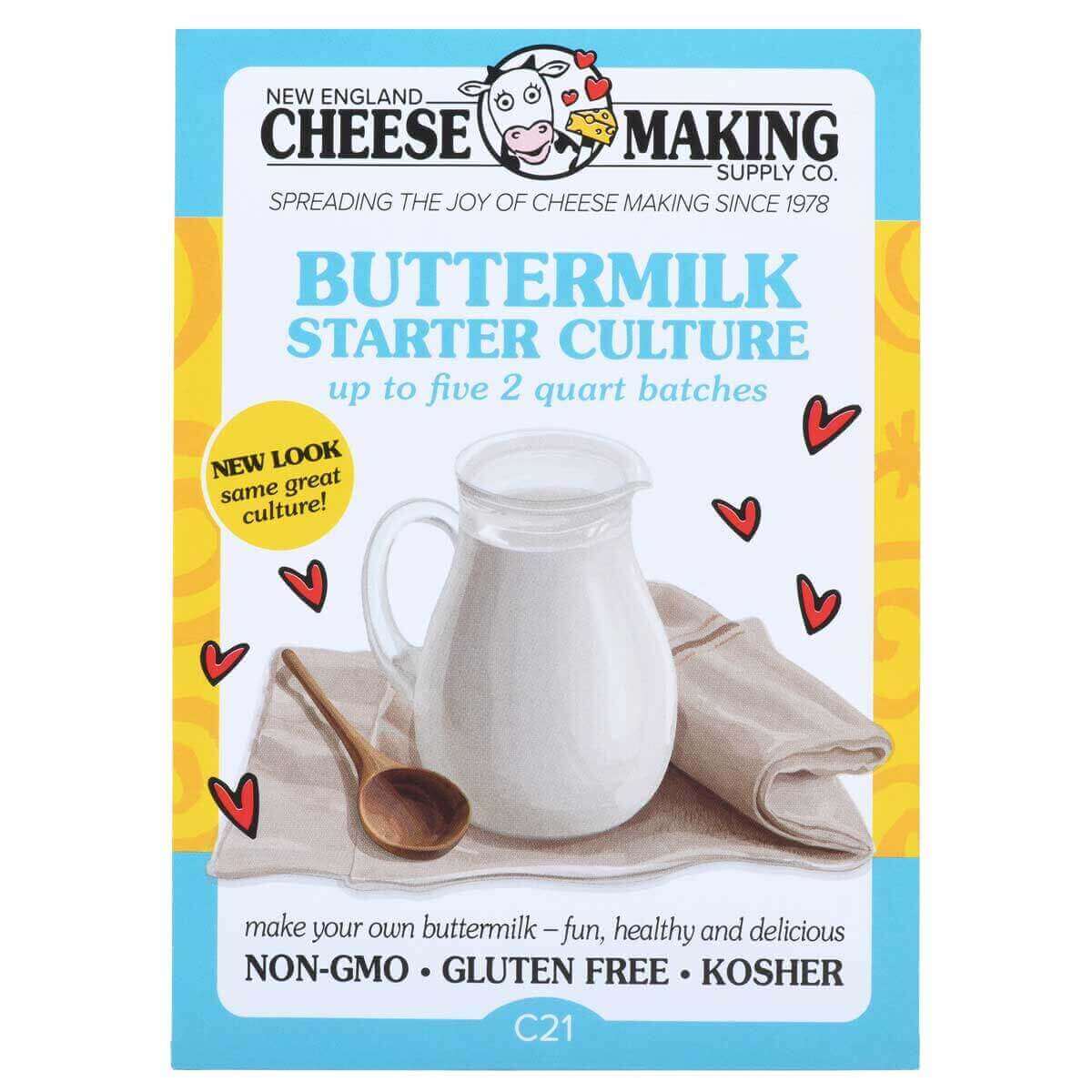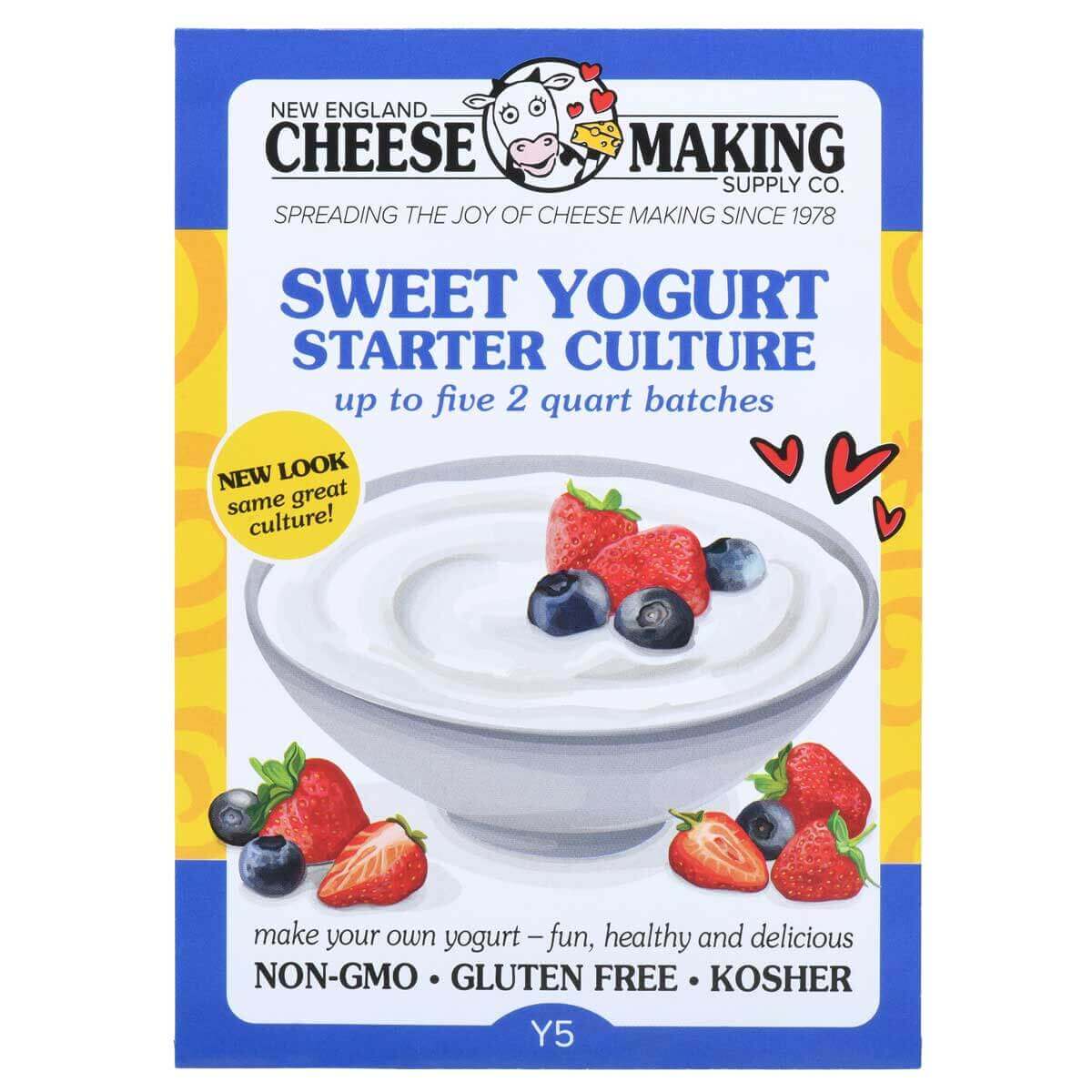Lessons from the Masters in Italy
Cheese is culture—literally and figuratively—and few cheeses carry that weight quite like Parmigiano-Reggiano and Romano. These iconic Italian cheeses may both be hard, salty, and grating-friendly, but they have distinct personalities shaped by geography, milk type, and tradition.
Parmigiano-Reggiano is nutty, crystalline, and aged to perfection—made from raw cow's milk in northern Italy using centuries-old techniques. Romano, on the other hand, brings a bold, salty bite. Traditionally made from sheep’s milk and aged with a piquant edge, it's the flavor powerhouse of the Italian table.
While many of us grew up with the green can version of “Parmesan,” the real versions of this cheese is rich, nuanced, and steeped in history. On a trip to Italy, I had the rare chance to learn directly from the masters themselves—cheese makers who didn’t just show me how they make their cheese, but insured I understood every decision from milk to aging.
This article explores the key differences between Parmigiano and Romano, and how you can bring a variation of these old-world cheeses to life in your own kitchen—whether you're working with everyday store-bought milk or the freshest raw milk available. Along the way, you'll find links to three of our favorite recipes:
- Parmesan style cheese – beginner-friendly and most tools you already have at home
- Parmesan style cheese with Raw Milk – more advanced, with deeper flavor and old-world technique
- Romano style cheese – bold, salty, and packed with character
Let’s dive in—and discover what makes these two cheeses so beloved, so different, and so rewarding to make by hand.

Parmigiano-Reggiano: The King of Cheese
Parmigiano-Reggiano (literally “Parmesan from Parma and Reggio Emilia”) is more than just a delicious grating cheese—it's a masterpiece of precision, microbial magic, and centuries-old tradition. Often called “the king of cheese,” it’s produced exclusively in the northern Italian provinces of Parma, Reggio Emilia, Modena, Bologna (west of the Reno River), and Mantua (south of the Po River). Every aspect of its creation is strictly regulated—from the cows’ diet to the exact microflora used to ripen it.
Here’s what makes Parmigiano-Reggiano so special—and why it’s one of the most celebrated cheeses in the world:
- Strict geographic origin: Only cheese made in specific regions of northern Italy can legally be called Parmigiano-Reggiano, protected by a PDO (Protected Designation of Origin).
- Fresh, layered milk: Cheese makers blend partially skimmed evening milk with full-fat morning milk to achieve the perfect balance of fat and protein. This layered approach gives the cheese its signature richness and texture.
- Copper vats: Large, bell-shaped copper vats are central to the traditional process. Copper conducts heat evenly, supports beneficial microbial activity, and contributes to the cheese’s unique flavor. While difficult to find (and often restricted) in the U.S., they remain a staple of Italian production.
- Natural starter cultures: Rather than commercial packets, cheese makers use whey saved from the previous day's batch—rich in native thermophilic bacteria—to culture the milk. This preserves the distinct microbial environment of each farm, resulting in deep, evolving flavor profiles.
- Fine curd cut: Curds are sliced to the size of rice grains using a tool called a spino, promoting moisture loss and leading to Parmigiano’s trademark dry, grainy texture.
- Cooked curds, no pressing: The curds are slowly cooked to 130°F (54°C), then allowed to settle and consolidate under their own weight in the warm whey—no mechanical pressing needed at this stage.
- Salt brining: Wheels are submerged in brine for 18–25 days, which infuses them with salt and helps develop the natural, protective rind.
- Extended aging: Parmigiano is aged for a minimum of 12 months, with most wheels aged 24 to 36 months or longer. As it ages, proteins break down, flavors concentrate, and crystals form—resulting in a savory, complex profile with a slightly crunchy texture.
- The “Grana” texture: This refers to the cheese’s characteristic granular structure, which develops during aging. Parmigiano is traditionally split—not sliced—with small wedge-shaped knives that follow the natural grain of the cheese.

Banks and Cheese: Yes, It’s a Thing
Parmigiano-Reggiano isn’t just a prized food—it’s a financial asset. In fact, in parts of northern Italy, wheels of Parmigiano are so valuable that banks accept them as loan collateral.
That’s right, cheese literally backs business loans. Here’s how it works:
- Cheese as collateral: A producer can borrow money from a bank and secure the loan with aging wheels of Parmigiano-Reggiano.
- Secure storage: The cheese is held in temperature- and humidity-controlled vaults overseen by the bank. These facilities are monitored as carefully as a wine cave or art gallery.
- Maturing value: As the cheese ages and gains flavor, it also gains market value. Meanwhile, the bank earns interest, and the cheesemaker gets capital to fund more production.
- Insured investment: These vaults often hold tens of thousands of wheels—millions of euros in inventory—and are fully insured. Entire warehouses are essentially “cheese banks.”
This may sound like modern economic ingenuity, but it actually echoes a 2,000-year-old tradition.
Legend has it that Roman soldiers marched on this cheese, meaning Parmigiano (or its ancient ancestor) was a key ration during military campaigns. It was portable, calorie-dense, long-lasting, and nourishing—exactly the kind of food you’d want when crossing mountains and empires. In that sense, Parmigiano was valuable even then—a kind of edible currency for the legions.
Fast forward to today, and it’s still treated that way—only now, it’s stored behind bank vault doors instead of in a soldier’s pack.
Yes, this cheese has seen emperors, invasions, and now...investment portfolios.

Making Parmesan Style Cheese at Home
Whether you're just getting started with aged cheese or ready to take things to the next level, making Parmesan at home is entirely possible—and incredibly rewarding. For beginners, we recommend starting with our approachable Parmesan Style Cheese Recipe, which uses store-bought milk and standard kitchen tools.
If you're ready for a deeper dive and have access to high-quality raw milk, you can make a version that's closer to the traditional cheese I saw being made vat-side in Italy. This version mimics old-world methods and produces a richer, more complex flavor. Start with our Parmesan Style Cheese Recipe with Raw Milk.
Here’s how to bring traditional Italian techniques into your home setup:
- Adjust the milk fat: Just like in Italy, you'll want to collect milk in two stages. Skim the cream from the evening’s milk after it has rested overnight, then combine the low-fat milk with full-fat morning milk. This replicates the balanced fat content of traditional Parmigiano.
- Choose the right culture: Traditional Parmesan relies on whey from the previous day’s batch, which carries active native bacteria. Since this isn't always practical—or permitted—at home, we recommend using our Bulgarian Yogurt Culture. It offers a well-balanced blend of thermophilic and bulgaricus strains to support clean, complex flavor development.
- Use controlled, quick heating: In Italy, curds are cooked rapidly with steam. At home, use a double boiler (bain-marie) and keep a kettle of boiling water on hand to help raise the temperature quickly and evenly. Speed matters—the curds should reach their final cook temperature swiftly to prevent unwanted bacterial growth.
- Deal with smaller curd mass: Traditional Parmigiano uses large vats, where curds consolidate under their own weight in the warm whey. At home, you can simulate this by gathering the curds in cloth and suspending them in the hot whey for initial consolidation before pressing.
- Press with more weight: Because you're working with a smaller volume, you’ll need to apply more pressure than typical soft cheeses require. This ensures the curds knit together properly and form that dense, crystalline "Grana" texture that defines true Parmesan-style cheese.
While you may not have a copper vat or an aging cave lined with wheels, these adaptations let you experience the true craft of making Parmesan—right in your own kitchen.

Grana Padano: The Close Cousin
Grana Padano is often mistaken for Parmigiano-Reggiano—and with good reason. The two share a similar appearance, texture, and even the word “Grana,” which refers to the grainy interior formed by the fine curd structure during aging. But while they may look alike, Grana Padano has its own story, one rooted in different geography, practices, and regulations.
This cheese hails primarily from the Lombardia region, north of the Po River, and is produced under a Protected Designation of Origin (PDO), though with far fewer restrictions than Parmigiano-Reggiano. It was developed by Cistercian monks in the 12th century as a way to preserve surplus milk—and it’s still one of Italy’s most popular cheeses today.
- More flexible regulations: Unlike Parmigiano, Grana Padano can be made in a broader region and with less rigid requirements for feed, milk freshness, and aging time.
- Milk quality: Cows producing milk for Grana Padano may be fed silage (fermented forage), which is prohibited for Parmigiano-Reggiano. The milk also doesn't need to be as fresh—production can use milk from multiple days.
- Shorter aging: Grana Padano is typically aged between 9 and 16 months, although some aged versions reach 20 months. This shorter aging window results in a milder flavor and slightly softer texture.
- Lower fat content: The cheese is made from partially skimmed milk and has a leaner profile than Parmigiano, which contributes to its lighter flavor and texture.
While Grana Padano may not offer the same depth or intensity as Parmigiano-Reggiano, it’s still a remarkable cheese—nutty, versatile, and more accessible in both price and production. For home cheese makers, it serves as an excellent inspiration for simpler aged cheeses that still deliver great flavor and texture.

Romano: Sharp, Salty, and Spicy
If Parmigiano is elegant and nutty, Romano is its bolder, more assertive cousin—sharp, salty, and unapologetically flavorful. Traditionally made from sheep’s milk and known as Pecorino Romano, this cheese boasts a snowy white color, crumbly texture, and a flavor profile that ranges from tangy to downright peppery as it ages.
Outside of Italy, you'll also find regional variations made from cow's milk (Vacchino Romano) and goat's milk (Caprino Romano). While milder than the sheep’s milk version, these adaptations still carry Romano’s signature punch and are more commonly produced in the U.S., where stronger cheeses are growing in popularity.
Romano’s bold character is no accident—it was designed for both preservation and performance in the kitchen.
- High salt content: Historically, Romano was heavily salted to survive the warm Mediterranean climate. The result? A cheese that not only lasts but also adds intense flavor to pasta, soups, and sauces. In many Italian recipes, Romano serves as the salt in the dish.
- Piquant flavor: The unmistakable sharpness of Romano comes from the addition of lipase, an enzyme that breaks down milk fats and creates earthy, spicy undertones. Traditionally, lipase was introduced using rennet paste from young lambs—a practice still used in some parts of Italy today. In the U.S., lipase is typically added in powdered form, extracted from calf or goat sources.
- Ancient roots: Romano cheese dates back over 2,000 years. It was a staple of the Roman diet and mentioned in one of the earliest agricultural texts, De Re Rustica. Though originally made in the region of Latium near Rome, production shifted to Sardinia and southern Tuscany in the 1800s due to urban regulations and increased demand.
While Romano may not be as widely known in the U.S. as Parmesan, it’s gaining fans among those who crave cheese with character. Its assertive flavor makes it ideal for grating, cooking, or even nibbling with bold pairings like olives or charcuterie.
Want to try your hand at making it? Start with our flavorful and satisfying Romano Cheese Making Recipe.

Making Romano Style Cheese at Home
Romano may have ancient roots and bold flavor, but you don’t need a hillside in Sardinia to make it at home. With a few smart adjustments, you can craft a Romano-style cheese that captures its signature punchy character—whether you’re using cow’s milk, sheep’s milk, or somewhere in between.
Here are a few tips to help you get started:
- Add lipase for flavor: One of the defining characteristics of Romano is its sharp, spicy finish—and that comes from an enzyme called lipase, which breaks down milk fats into those complex, piquant notes. Traditionally, lipase came from rennet paste made from a lamb’s stomach, but today you can achieve similar results with freeze-dried sheep lipase for a strong, authentic flavor or calf lipase for a milder version. Be sure to rehydrate your lipase before adding it to the milk.
- Use what milk you have: While traditional Pecorino Romano uses sheep’s milk, you can absolutely use high-quality cow’s milk for a delicious result. Just note that the flavor will be slightly less earthy and intense—but still wonderfully sharp and salty.
- Get ready for bold aromas: Aged Romano doesn’t hold back. As it matures, it develops a strong, savory scent that can be downright pungent—especially if you're using lipase. It’s not a flaw—it’s part of the charm. That distinctive aroma means you're on the right track.
Romano is one of the most forgiving aged cheeses to make at home, and one of the most rewarding if you like cheeses with attitude. Once you've made it, aged it, and grated it over your favorite pasta or greens, you'll understand why it’s been beloved for millennia.
Final Thoughts: A Tale of Two Cheeses
Parmigiano-Reggiano and Romano may share a history of hard rinds and grated glory, but their personalities couldn’t be more distinct. Parmigiano is refined and crystalline, with nutty depth and savory complexity that unfolds over years of careful aging. Romano, on the other hand, is bold, salty, and sharp—an unapologetically flavorful cheese that brings heat, tang, and history to every dish it touches.
Both are time-tested, deeply rooted in tradition, and surprisingly accessible for home cheese makers with a bit of patience and curiosity. Whether you're layering fresh curds in your kitchen or dreaming of bell-shaped copper vats in Italy, you’re engaging in a practice that’s nourished civilizations for over two thousand years.
Want to try your hand at it? Start here:
- Parmesan Style Cheese Recipe – a classic, approachable hard cheese made with everyday tools
- Parmesan with Raw Milk Recipe – for those ready to explore traditional techniques and complex flavor development
- Romano Style Cheese Recipe – for cheese lovers who crave something sharp, salty, and full of character
So wherever you are in your cheese making journey—seasoned affineur or curious beginner—know that every batch connects you to something ancient, meaningful, and delicious.






























